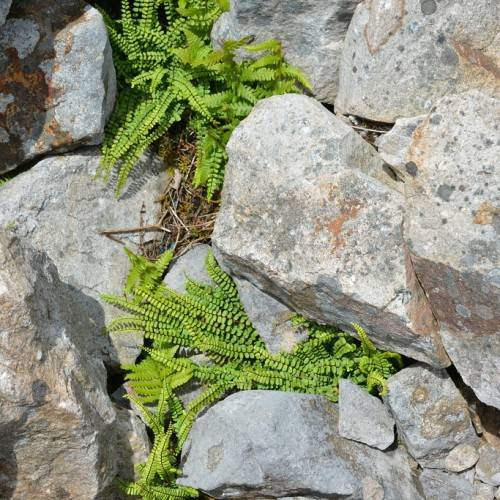
Maidenhair Spleenwort
Asplenium trichomanes subsp. quadrivalens
Also Known As - Limestone Maidenhair SpleenwortWatering:
Average
Hardiness Zone:
Sun:
part shade
Leaf:
Yes
Growth Rate:
Low
Salt Tolerant:
Yes
watering
Hart's Tongue Fern should be watered once a week, but only lightly. The soil should be kept slightly moist but not wet or soggy. In the warmer months, you may need to water the fern more often; however, providing too much water can lead to root rot, so check the soil moisture level before watering.
sunlight
Hart's Tongue ferns need a moderate amount of sunlight (morning to mid-afternoon is the best) to remain healthy. Partial shade or indirect light is optimal. Avoid high sunlight that is too intense, as it can burn the fronds and cause the plant to die. If the fern is kept too far away from any source of light, it will become weak and spindly. Aim to provide your fern with at least 2-3 hours of bright but indirect sunlight each day, or a small amount of direct sunlight that does not exceed 4-6 hours.
pruning
For Hart's Tongue Fern, pruning should be done infrequently and conservatively. The best time to prune is in early spring before new growth emerges, as this will encourage healthy, tight growth. The amount of pruning vary depending on the size and health of the plant, but in general pruning should not be done to more than approximately 1/3 of the plant. The fronds should be pruned toward the base, cutting off any dead or mangled fronds. Any dried up fronds due to lack of watering should also be removed. Prune any crossed or overcrowded fronds as this will allow for more air circulation, ultimately promoting healthier growth. For more severely damaged plants, prune all fronds down to the crown and new fronds will grow back in time.
